 Multiple Choice Questions
Multiple Choice QuestionsA particle of mass m is moving along the side of a square of side ‘a’, with a uniform speed v in the x-y plane as shown in the figure: 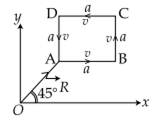
Which of the following statements is false for the angular momentum → L about the origin?




A point particle of mass m, moves along the uniformly rough track PQR as shown in the figure. The coefficient of friction, between the particle and the rough track equals µ. The particle is released, from rest, from the point P and it comes to rest at a point R. The energies, lost by the ball, over the parts, PQ and QR, of the track, are equal to each other, and no energy is lost when particle changes direction from PQ to QR. The values of the coefficient of friction µ and the distance x(=QR), are, respectively close to :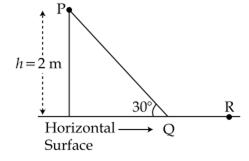
0.2 and 6.5 m
0.2 and 3.5 m
0.29 and 3.5 m
0.29 and 3.5 m
A roller is made by joining together two cones at their vertices O. It is kept on two rails AB and CD which are placed asymmetrically (see figure), with its axis perpendicular to CD and its centre O at the centre of line joining AB and CD (see figure). It is given a light push so that it starts rolling with its centre O moving parallel to CD in the direction shown. As it moves, the roller will tend to: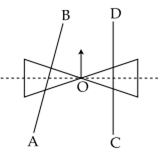
turn left
turn right
go straight
go straight
Four particles, each of mass M and equidistant from each other, move along a circle of radius R under the action of their mutual gravitational attraction. The speed of each particle is
![]()
![]()
![]()
![]()
A projectile is given an initial velocity of where is along the ground and
where is along the ground and  is along the vertical. If g = 10 m/s2, the equation of its trajectory is:
is along the vertical. If g = 10 m/s2, the equation of its trajectory is:
y = x-5x2
y = 2x-5x2
4y = 2x- 5x2
4y = 2x- 5x2
A boy can throw a stone up to a maximum height of 10 m. The maximum horizontal distance that the boy can throw the same stone up to will be
 m
m
10 m
 m
m
 m
m
A particle of mass m is at rest at the origin at time t = 0. It is subjected to a force F (t) = F0e–bt in the x direction. Its speed v(t) is depicted by which of the following curves?
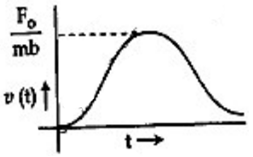
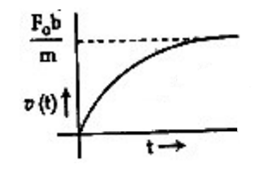
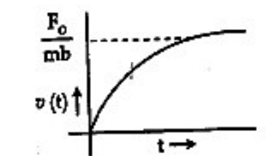

An object moving with a speed of 6.25m/s, is decelerated at a rate given by dv/dt =- 2.5√v, where v is the instantaneous speed. The time taken by the object, to come to rest, would be
2 s
4 s
8 s
8 s
A particle is moving with velocity, where K is a constant. The general equation for its path is
where K is a constant. The general equation for its path is
y = x2 + constant
y2 = x + constant
xy = constant
xy = constant
The figure shows the position –time (x – t) graph of one–dimensional motion of a body of mass 0.4 kg. The magnitude of each impulse is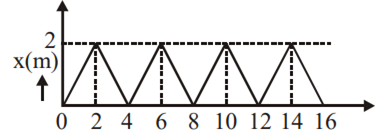
0.4 (Ns)
0.8 Ns
1.6 Ns
1.6 Ns
